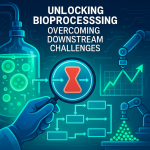🔬 RNA modifications play a critical role in gene regulation, impacting stability and expression. EpiPlex minimizes technical noise and provides accurate quantitation with minimal RNA inputs.
📈 The platform allows detailed study of m6A and inosine modifications, revealing insights into various biological processes and diseases.
Introduction:
The article discusses the advancements of Alida Biosciences’ EpiPlex platform in capturing and quantifying RNA modifications, specifically focusing on N6-methyladenosine (m6A) and inosine. The study highlights the importance of RNA modifications in gene regulation and their potential implications for understanding diseases like cancer and neurological disorders.
- RNA modifications play a crucial role in gene regulation, impacting mRNA stability, translation, and splicing, thus elucidating their biological significance.
- The current methodologies for detecting RNA modifications, such as m6A RNA immunoprecipitation and nanopore sequencing, face limitations including the need for high RNA input and challenges in quantitative analysis.
- AlidaBio’s EpiPlex platform combines robust assay controls and bioinformatics to enable accurate quantitation of RNA modifications from ultra-low inputs, enhancing the ability to uncover regulatory landscapes.
- The EpiPlex assay significantly reduces technical noise and provides a scalable approach for profiling various RNA modifications with high resolution across different biological contexts.
- The findings from the EpiPlex platform reveal unique insights into the dynamics of RNA modifications in conditions like hepatocellular carcinoma, highlighting the potential therapeutic significance and necessity for rigorous quantitation methods.
Conclusion:
Overall, the EpiPlex platform represents a significant advancement in epitranscriptomics, facilitating the study of RNA modifications at unprecedented resolution and sensitivity. These insights into RNA modification dynamics may pave the way for novel therapeutic strategies in cancer and other diseases, emphasizing the implications of quantifying and accurately mapping the epitranscriptome.



